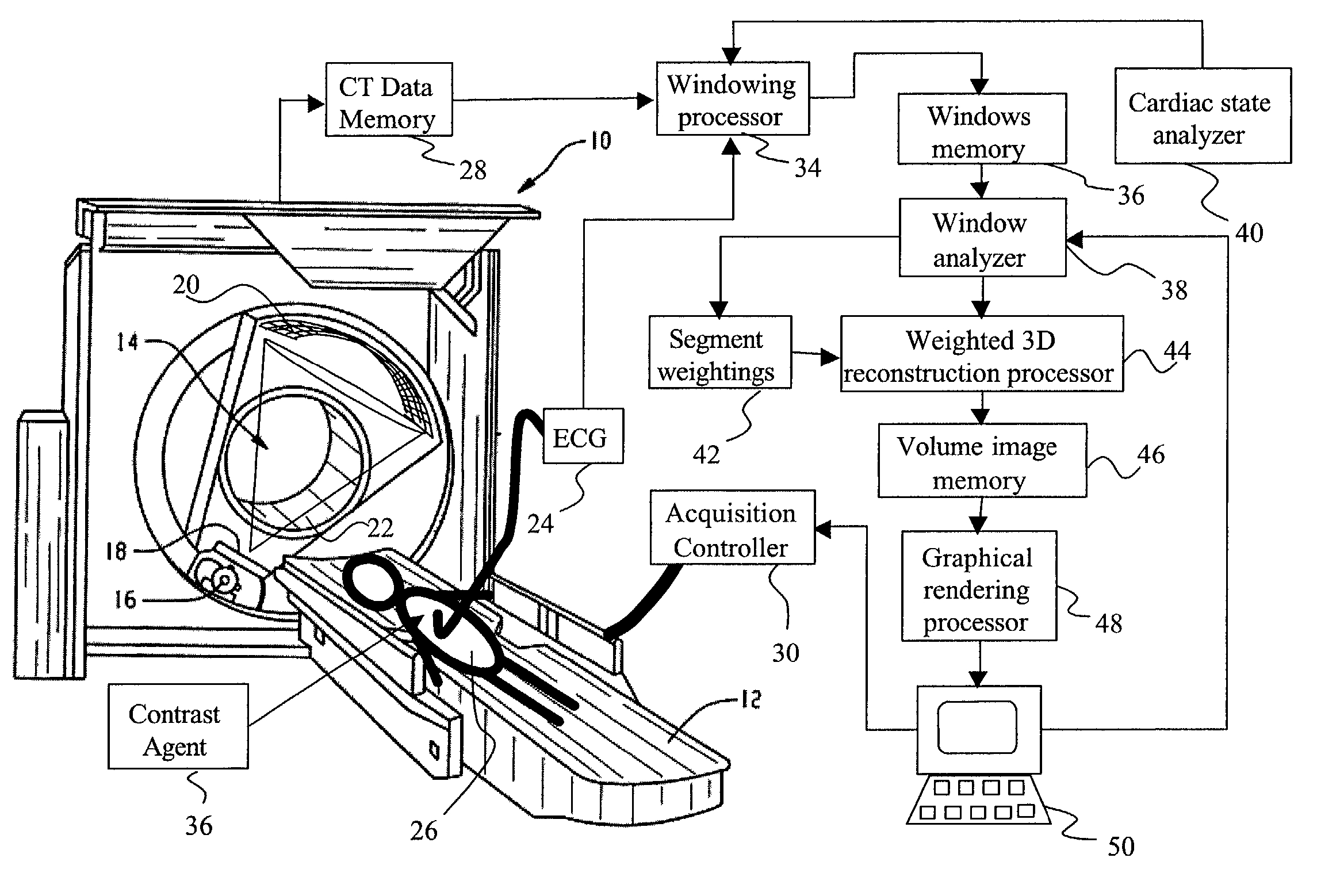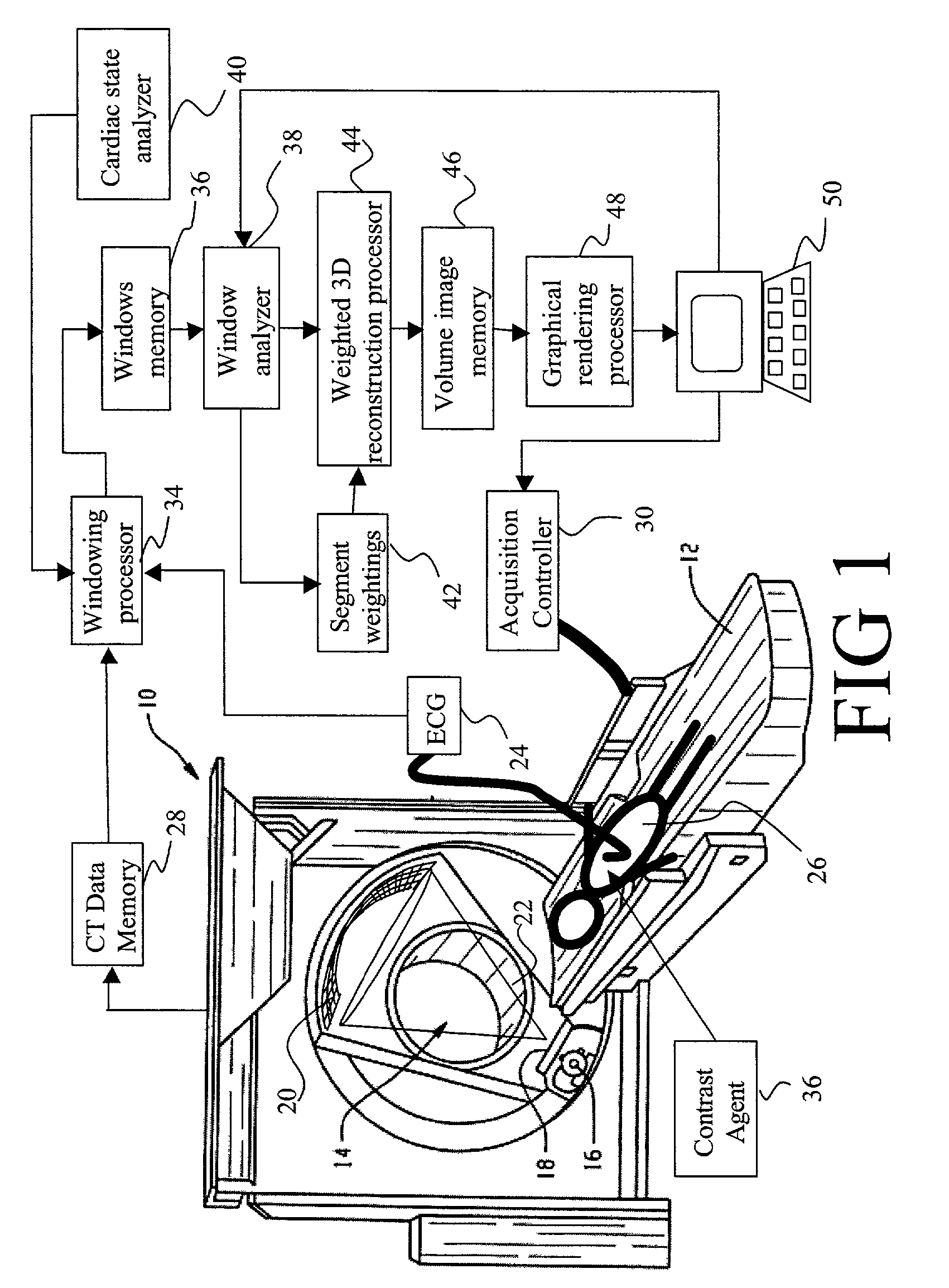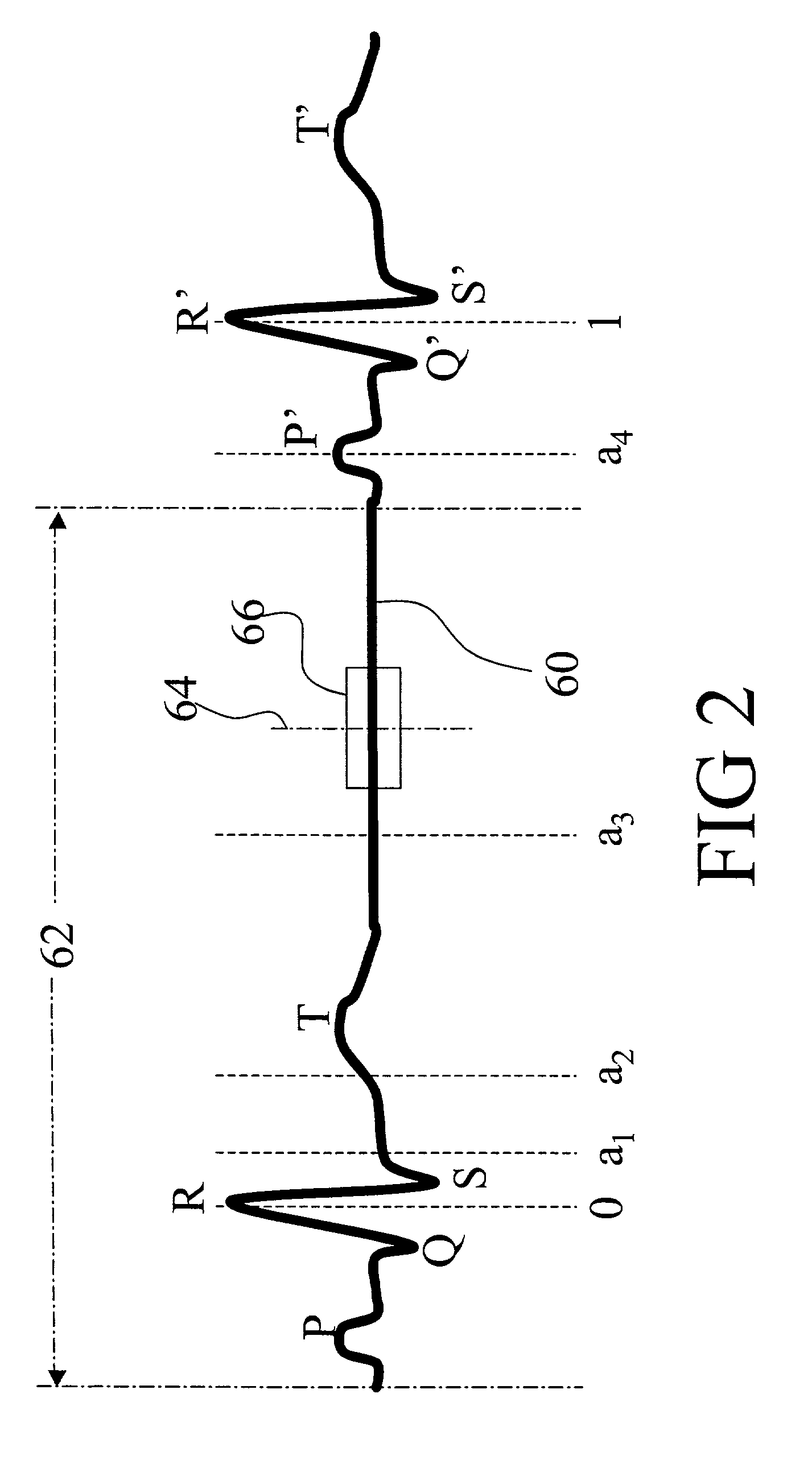Dynamic computed tomography imaging using positional state modeling
a computed tomography and dynamic technology, applied in the field of medical imaging arts, can solve the problems of inconsistent medical diagnosis of cardiac diseases, insufficient cardiac imaging modalities, and inability to fully satisfy existing cardiac imaging modalities, so as to improve the accuracy of diagnostic information, improve temporal and spatial resolution, optimally provide a selected angular coverage
- Summary
- Abstract
- Description
- Claims
- Application Information
AI Technical Summary
Benefits of technology
Problems solved by technology
Method used
Image
Examples
Embodiment Construction
[0042]With reference to FIG. 1, an exemplary cone-beam computed tomography (CT) scanner 10 includes a subject support 12 such as a patient couch which is linearly movable inside an examination region 14. An x-ray tube assembly 16 mounted on a rotating gantry projects x-rays through the examination region 14. A collimator 18 collimates the radiation in two dimensions. In the exemplary CT scanner 10, a two-dimensional x-ray detector array 20 is disposed on the rotating gantry across the examination region from the x-ray tube. In an alternative embodiment (not shown), the detector array includes an array of two-dimensional detector rings mounted in a stationary fashion around the rotating gantry.
[0043]In the exemplary cone-beam CT scanner 10, the x-ray tube assembly 16 cooperates with the collimator 18 to produce a conical or wedge-shaped beam 22 which diverges conically as it passes through the examination region 14. The cone beam 22 substantially covers the detector array 20, which i...
PUM
 Login to View More
Login to View More Abstract
Description
Claims
Application Information
 Login to View More
Login to View More - R&D
- Intellectual Property
- Life Sciences
- Materials
- Tech Scout
- Unparalleled Data Quality
- Higher Quality Content
- 60% Fewer Hallucinations
Browse by: Latest US Patents, China's latest patents, Technical Efficacy Thesaurus, Application Domain, Technology Topic, Popular Technical Reports.
© 2025 PatSnap. All rights reserved.Legal|Privacy policy|Modern Slavery Act Transparency Statement|Sitemap|About US| Contact US: help@patsnap.com



